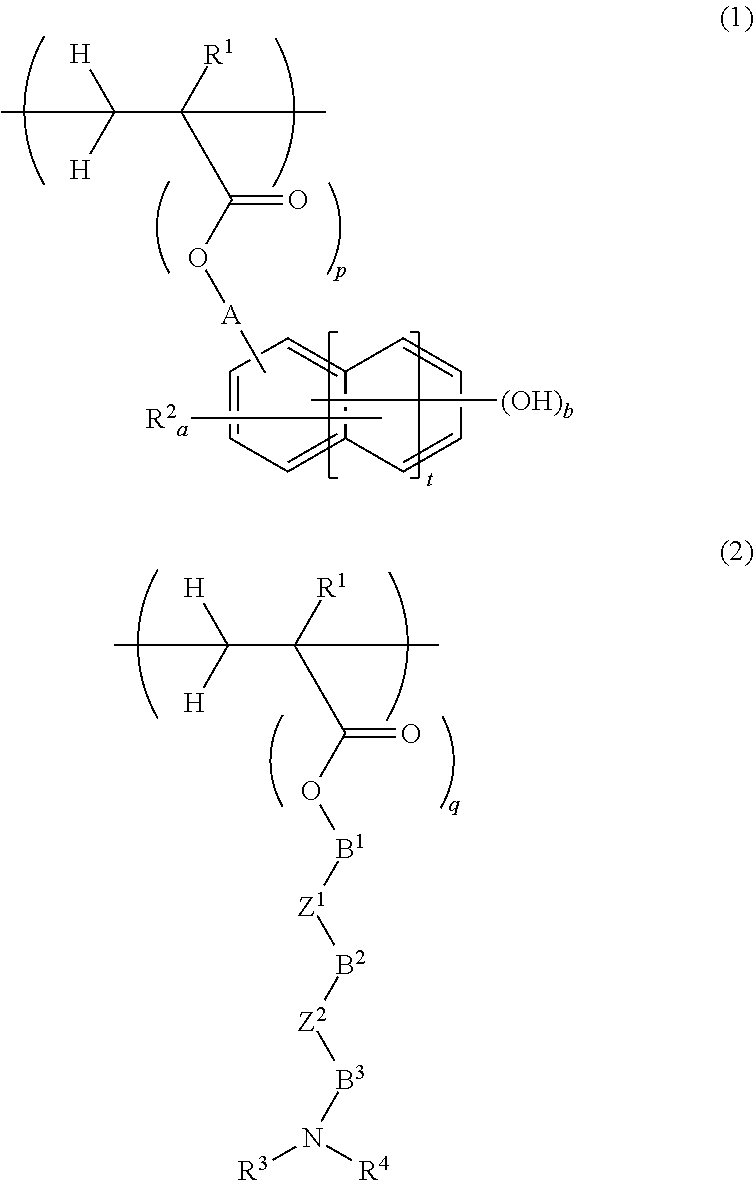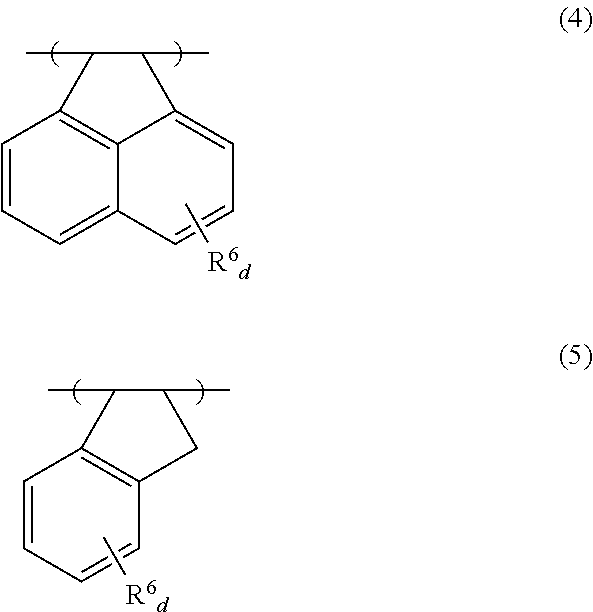Chemically amplified negative resist composition for EB or EUV lithography and patterning process
a negative resist and composition technology, applied in the field of chemical amplifying negative resist composition for eb or euv lithography, can solve the problems of rough line edges, inability to overcome conventional resist compositions, and more serious problems, so as to reduce the degree of undercutting, inhibit acid deactivation, and improve the effect of ler
- Summary
- Abstract
- Description
- Claims
- Application Information
AI Technical Summary
Benefits of technology
Problems solved by technology
Method used
Image
Examples
polymer synthesis example 1
[0136]In a 200-mL dropping funnel under nitrogen blanket, a solution was prepared by dissolving 35.5 g of 4-hydroquinone monomethacrylate, 4.7 g of acenaphthylene, 9.2 g of 4-methylstyrene, 0.62 g of a monomer Z-1 of the structure shown below, and 6.8 g of dimethyl 2,2′-azobis(2-methyl-propionate) (V601, Wako Pure Chemical Industries, Ltd.) in 64 g of methyl ethyl ketone (MEK) as a solvent. A 300-mL polymerization flask was purged with nitrogen, charged with 53 g of MEK, and heated at 80° C., after which the solution was added dropwise to the flask over 4 hours. After the completion of dropwise addition, stirring was continued for 16 hours while maintaining the polymerization temperature of 80° C. The polymerization solution was then cooled down to room temperature and added dropwise to 1,000 g of hexane whereupon a copolymer precipitated. The copolymer precipitate was collected by filtration and washed twice with 200 g of hexane. The mass collected by filtration was dissolved in 12...
polymer synthesis example 2
[0138]In a 200-mL dropping funnel under nitrogen blanket, a solution was prepared by dissolving 36.2 g of 4-(1-ethoxyethoxy)styrene, 4.5 g of acenaphthylene, 8.7 g of 4-methylstyrene, 0.59 g of monomer Z-1 of the above structure, and 5.4 g of dimethyl 2,2′-azobis(2-methyl-propionate) (V601, Wako Pure Chemical Industries, Ltd.) in 64 g of propylene glycol monomethyl ether (PGME) as a solvent. A 300-mL polymerization flask was purged with nitrogen, charged with 53 g of PGME, and heated at 80° C., after which the solution was added dropwise to the flask over 4 hours. After the completion of dropwise addition, stirring was continued for 20 hours while maintaining the polymerization temperature of 80° C. Thereafter, the polymerization solution was cooled down to room temperature, combined with 18 g of methanol and 0.85 g of oxalic acid dihydrate, and stirred at 50° C. for 3 hours. The reaction solution was added dropwise to a mixture of 1,620 g of water and 30 g of methanol whereupon a c...
PUM
| Property | Measurement | Unit |
|---|---|---|
| size | aaaaa | aaaaa |
| wavelength | aaaaa | aaaaa |
| size | aaaaa | aaaaa |
Abstract
Description
Claims
Application Information
 Login to View More
Login to View More - R&D
- Intellectual Property
- Life Sciences
- Materials
- Tech Scout
- Unparalleled Data Quality
- Higher Quality Content
- 60% Fewer Hallucinations
Browse by: Latest US Patents, China's latest patents, Technical Efficacy Thesaurus, Application Domain, Technology Topic, Popular Technical Reports.
© 2025 PatSnap. All rights reserved.Legal|Privacy policy|Modern Slavery Act Transparency Statement|Sitemap|About US| Contact US: help@patsnap.com



